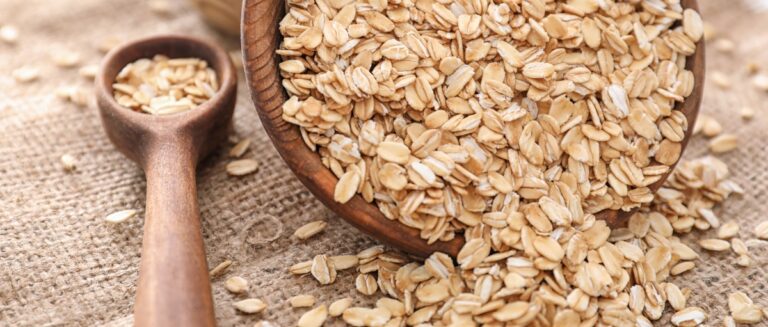Are you feeling frustrated with your weight? You’re not alone. While our culture tends to focus on losing pounds, being underweight can be a serious health concern, especially as we age. A study by the CDC indicates that an estimated .5% of U.S. seniors are underweight, which can lead to weakened immunity, fragile bones, and even cognitive decline.
Whether you’re struggling to maintain your weight due to illness or aging or you’re trying to build muscle strength, gaining weight can feel like an uphill battle. But here’s the good news: reaching a healthy weight is absolutely possible with the right approach. The key is focusing on nourishing your body, not just consuming extra calories.
So, if you’re ready to take charge of your weight and health, read on. With a little knowledge and dedication, you’ll be on your way to reaching your goals and feeling your best self, inside and out.
Are You Actually Underweight?
Before we explore strategies on how to gain weight with high metabolism, it’s important to take a step back. How can you determine if you’re truly underweight? This question is vital because being underweight involves more than just the number you see on the scale; it also encompasses your overall health and well-being.
The most common way to determine if you’re underweight is by calculating your Body Mass Index (BMI). BMI is a measure of body fat based on your weight in relation to your height. A BMI below 18.5 is considered underweight.
To calculate your BMI, divide your weight in kilograms by your height in square meters. You can also use an online BMI calculator, like this one from the National Institutes of Health.
However, BMI only tells part of the story. It doesn’t distinguish between fat and muscle mass, and it may not be accurate for older adults who have lost height. That’s why it’s also important to consider your body fat percentage and muscle mass.
A body fat percentage below 14% for women or 8% for men is considered dangerously low. Talk to your doctor if you need more clarification about your body composition. They can use skinfold measurements or bioelectrical impedance to get a more accurate picture.
Common Reasons for Being Underweight
There are many reasons why someone might be underweight, including:
- Genetics and a naturally fast metabolism.
- Illness or chronic health conditions that affect appetite or nutrient absorption.
- Medications that suppress appetite.
- Excessive physical activity or exercise without proper nutrition.
- Unhealthy dieting or disordered eating habits.
- Age-related changes in appetite and taste.
- Dental issues that make eating difficult.
If you’ve experienced unexplained weight loss or are struggling to maintain a healthy weight, don’t ignore it. Talk to your healthcare provider. They can help rule out underlying health issues and work with you to develop a safe, effective plan for gaining weight.
Remember, being underweight isn’t just a cosmetic concern. It can have serious consequences for your health, including:
- Weakened immune system and increased risk of infections.
- Fragile bones and increased risk of fractures.
- Muscle weakness and decreased mobility.
- Fatigue and low energy levels.
- Depression and cognitive decline.
You can gain weight safely and sustainably with the proper nutrition and lifestyle strategies.
The Healthy Approach to Gaining Weight
Gaining weight may seem as simple as eating more calories than you burn. But when it comes to doing it healthily, there’s a bit more nuance involved. The goal isn’t just to pack on pounds but to nourish your body with the proper nutrients and build lean muscle mass. Here’s how.
Slow and Steady Wins the Race
When you’re eager to see results, aiming for rapid weight gain can be tempting. But just like crash diets are a recipe for disaster, trying to gain weight too quickly can backfire. Eating way more calories than your body is used to can lead to digestive discomfort, fatigue, and excessive fat gain rather than lean mass.
Instead, aim for a slow, steady rate of weight gain–about 1 to 2 pounds per week. This may not sound like much, but it adds up over time. Plus, a gradual approach is more sustainable and allows your body to adjust.
Focus on Nutrition, Not Just Calories
When it comes to calorie intake, lots of people don’t know just how many calories are needed to gain weight healthily. The general consensus is you need to eat at least 500 to 1000 calories more than you usually would. But quality matters just as much as quantity. Gaining weight isn’t a free pass to indulge in junk food and empty calories. Your body still needs vitamins, minerals, and other essential nutrients to function.
Instead of reaching for processed snacks and sugary treats, focus on nutrient-dense foods like:
- Lean proteins (meat, fish, eggs, legumes).
- Complex carbohydrates (whole grains, starchy vegetables).
- Healthy fats (avocados, nuts, seeds, olive oil).
- Fruits and vegetables (berries, leafy greens, sweet potatoes).
These foods will provide the building blocks your body needs to gain weight while promoting healthy eating. Plus, they’ll help keep you full and satisfied, making you less likely to overeat or make poor food choices.
Don’t Forget About Exercise
When you’re trying to gain weight, it may seem counterintuitive to exercise. After all, doesn’t physical activity burn calories? While it’s true that exercise can support a calorie deficit for weight loss, it’s also a crucial piece of the weight gain puzzle.
Strength training exercises like lifting weights or resistance bands can help you build lean muscle mass. And the more muscle you have, the more calories your body burns at rest. That means you’ll be able to eat more without gaining excessive fat.
Plus, exercise has a host of other benefits for older adults, including:
- Improved bone density and reduced risk of fractures.
- Better balance and coordination.
- Increased mobility and independence.
- Reduced risk of chronic diseases like diabetes and heart disease.
Aim for at least two weekly strength training sessions and 150 minutes of cardio and flexibility exercises. Remember to fuel your workouts with adequate nutrition—we’ll discuss this further in the next section.
Best Foods to Gain Weight
Fueling your body with the right foods is key to gaining weight healthily. Focus on nutrient-dense options that balance protein, complex carbohydrates, and healthy fats. Here are some top choices in each category:
Protein Powerhouses
- Meat (beef, pork, lamb, chicken)
- Fish and seafood
- Eggs
- Dairy (milk, cheese, yogurt)
- Legumes (beans, lentils, peas)
- Soy products (tofu, tempeh, edamame)
- Nuts and seeds
- High protein powders (whey, casein, plant-based)
Complex Carbs for Energy
- Whole grains (oats, brown rice, quinoa, whole wheat bread/pasta)
- Starchy vegetables (potatoes, corn, peas, winter squash)
- Legumes
- Fruits (bananas, apples, berries, oranges, dried fruit)
Healthy Fats for Flavor and Calories
- Avocados
- Olive oil, coconut oil, avocado oil
- Fatty fish (salmon, tuna, sardines, mackerel)
- Nuts and seeds (almonds, walnuts, chia seeds, flaxseeds)
- Nut and seed butter (peanut butter, almond butter, sunflower seed butter)
- Full-fat dairy (whole milk, cheese, yogurt)
Of course, knowing what to eat is one thing – putting it into practice is another. Try these meal and snack ideas to incorporate these nutrient-dense foods into your diet seamlessly:
- Smoothies made with whole milk, fruit, nut butter, and protein supplements or powder.
- Oatmeal topped with banana, walnuts, and a drizzle of honey.
- Scrambled eggs with cheese and avocado, served with whole-grain toast.
- Stir-fry made with protein of choice, brown rice, and mixed veggies.
- Whole grain sandwich with tuna salad, lettuce, and tomato.
- Trail mix made with nuts, seeds, dried fruit, and dark chocolate.
- Greek yogurt parfait with berries and granola.
- Baked potato topped with chili, cheese, and sour cream.
Remember, the key is choosing foods you enjoy and making you feel your best. Experiment with different flavors and textures to find meals and snacks that are both nutritious and delicious.
Lifestyle Tips to Boost Your Calorie Intake
In addition to focusing on what you eat, minor tweaks to your daily routine can significantly impact your weight gain journey. Here are some tips to try:
- Eat More Often: Instead of sticking to the traditional three square meals daily, eat 5 to 6 smaller meals every few hours. This can help you sneak in extra calories without feeling overly stuffed. Set reminders on your phone or schedule snacks into your day to make it a habit.
- Sip on High-Calorie Beverages: Drinking your calories can easily boost your intake without adding much extra volume. Choose nutrient-dense options like milk, 100% fruit juice, smoothies, or meal replacement shakes. Be mindful of added sugars; don’t let these drinks replace balanced meals.
- Use Bigger Plates and Bowls: Our brains are wired to equate bigger portions with more satisfaction. Take advantage of this visual cue by serving your meals on larger plates or in deeper bowls. You may naturally eat more without feeling like you’re forcing it.
- Make Every Bite Count: When trying to gain weight, it’s important to make every calorie work for you. Instead of filling up on low-calorie, watery foods like plain salads and broth-based soups, focus on more calorie-dense options. Think avocado instead of cucumber, potatoes instead of zucchini, and chicken thighs instead of breast.
- Add Extras When You Can: Little additions to your meals and snacks can add up over the day. Sprinkle cheese on top of your chili, add a generous drizzle of olive oil to your salad, spread nut butter on your banana, or stir heavy cream into your coffee. Get creative and find ways to boost the calorie content of your favorite foods.
Reaching a Healthier Weight, One Day at a Time
Gaining weight after 55 isn’t about completely overhauling your life overnight. It’s about making small, consistent changes that add up over time. It’s about nourishing your body with wholesome foods, moving in good ways, and giving yourself grace throughout the process.
Sustainable change takes time, and that’s okay.
Most importantly, treat yourself with compassion. Recognize that health is about so much more than the number on the scale or the reflection in the mirror. True wellness is about caring for your physical, mental, and emotional needs – and your weight is just one small piece of that puzzle.
You have the power to take control of your health and happiness. You can reach your weight gain goals with time, patience, and a commitment to self-care. So take it one day, one meal, one choice at a time. Celebrate your body for all that it does for you. Nourish it with kindness, respect, and an abundance of delicious, wholesome foods.
We can’t wait to see where this journey takes you. Remember–you’ve got this!
Sources
Centers for Disease Control and Prevention. (2020). Prevalence of underweight among adults aged 20 and over: United States, 2017–2018. CDC. https://www.cdc.gov/nchs/data/hestat/underweight-adult-17-18/underweight-adult.htm
National Institutes of Health. (2023). Body composition and anthropometry in adults. In Nutritional Assessment, Chapter 8. https://www.ncbi.nlm.nih.gov/books/NBK541070/
Medical News Today. (2023). Body fat percentage chart: What is the healthy range? Medical News Today. https://www.medicalnewstoday.com/articles/body-fat-percentage-chart
Sanford Health. (2023). Weight gain and athletic performance: How to balance both. Sanford Health. https://news.sanfordhealth.org/sports-medicine/weight-gain-performance/
Omni Calculator. (2023). Weight gain calculator: How many calories to gain weight? Omni Calculator. https://www.omnicalculator.com/health/weight-gain
Centers for Disease Control and Prevention. (2022). Physical activity basics for older adults: Adding movement to your life. CDC. https://www.cdc.gov/physical-activity-basics/adding-older-adults/index.html











